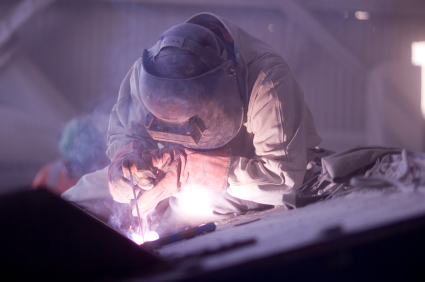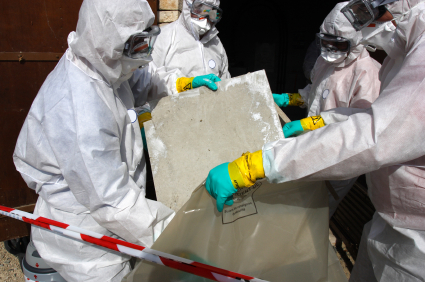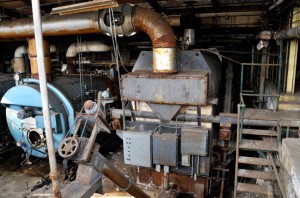Working at Your Trade Could Have Impacted Your Health
You are at risk for mesothelioma if your job brought you into contact with asbestos. And many jobs, especially in the construction field, fall into this category.
The National Institute of Occupational Safety and Health, the American Cancer Society and other health advocacy groups say that a large number of occupations between the 1940s and 1990s involved working with or near asbestos.
Many of these jobs were in blue-collar fields. Health watchdogs report that asbestos exposure was particularly common in skilled trades:
- Steelworkers
- Power-plant operators
- Boilermakers
- Insulators
- Shipbuilders
- Electricians
- Plumbers
- Automechanics
- Construction tradesmen
Asbestos exposure could happen in a number of ways
One common
cause of exposure is that
your job required you to physically handle asbestos or a product containing it.
Another is your
job might have placed you in an environment where asbestos was present. Usually, asbestos in a workplace was intended to prevent intensely hot processes or equipment from causing injury or property damage.
Asbestos also was present
in workplaces where it was essential to reduce or eliminate the danger of fire.Workplaces where asbestos for either purpose was often found include:
- Steel mills
- Refineries
- Power plants
- Assembly lines
- Shipyards
- Construction sites
- Automotive repair shops
- Navy
Asbestos danger lurked in so many forms for so many types of workers that it might be wise to assume you were among those exposed if you worked in any jobs that even related to these specific activities or settings.
A Chain of Exposures
Asbestos was also often built into in semifinished and finished goods. As a result, a single asbestos-containing product could easily be responsible for exposing workers in a range of occupations.
Water heaters
A water heater consists of a steel tank and pipe fittings, plus heating elements and internal insulation. The insulation is made of asbestos.
The asbestos came from a mine. Employees of the mining company together with employees of a railroad loaded the raw asbestos onto a train. The asbestos traveled to a processing plant.
At the processing plant, handlers and machine operators converted the raw asbestos into a material suitable to be used for water-heater insulation.
Warehousemen packaged and loaded the insulation material onto another train for shipment to a distributor.
Employees of the distributor received the insulation material and repackaged it for delivery to the water heater company.
Also delivered to the water heater company were component parts. These included a water tank and pipe fittings cast from steel. They did not contain asbestos, but asbestos was involved in making them.
The steel began as ore that later was forged by fire from gigantic furnaces in a mill. The furnaces and much of the interior of the mill were coated with protective asbestos. The furnaces occasionally had to be recoated with new asbestos.
The milled steel was shipped to a boiler factory. Boilermakers there used asbestos-shielded welding equipment, gloves and face hoods inside an asbestos-lined shop to create the water heater tank and fittings.
The prepared tank then went to the water heater company’s factory. Assembly line workers married the insulation to the tank. Warehousemen then packaged and shipped the completed water heater to a plumbing-supply retail store.
Employees of the retail store handled the asbestos-containing water heater and put it on display alongside other merchandise.
A construction contractor purchased the water heater for a home he was building and helped the store’s employees load it onto the back of his pickup truck.
The contractor drove to his project site and helped his own laborers unload the water heater. They carried it into the house
A plumber or a steamfitter later installed the water heater and connected all the pipes. The installation might also have required an electrician’s talents if the water heater was the type that ran on electricity instead of gas.
In total, the chain of asbestos exposure related to this one product stretched across 14 different occupations. The number would be much higher if all the occupations indirectly involved were included. For example, the custodians who clean waste asbestos from the insulation material-making machines.
Your Risk
If you have worked in any of these professions, it’s likely you were exposed to asbestos. This risk does not mean you will develop mesothelioma, but it means you should closely monitor your health, and get frequent medical checkups.
Mention to your doctor that you worked around asbestos, and consider collecting documentation related to your employment. If you have questions about occupational asbestos exposure, you can contact our patient support center for free.















